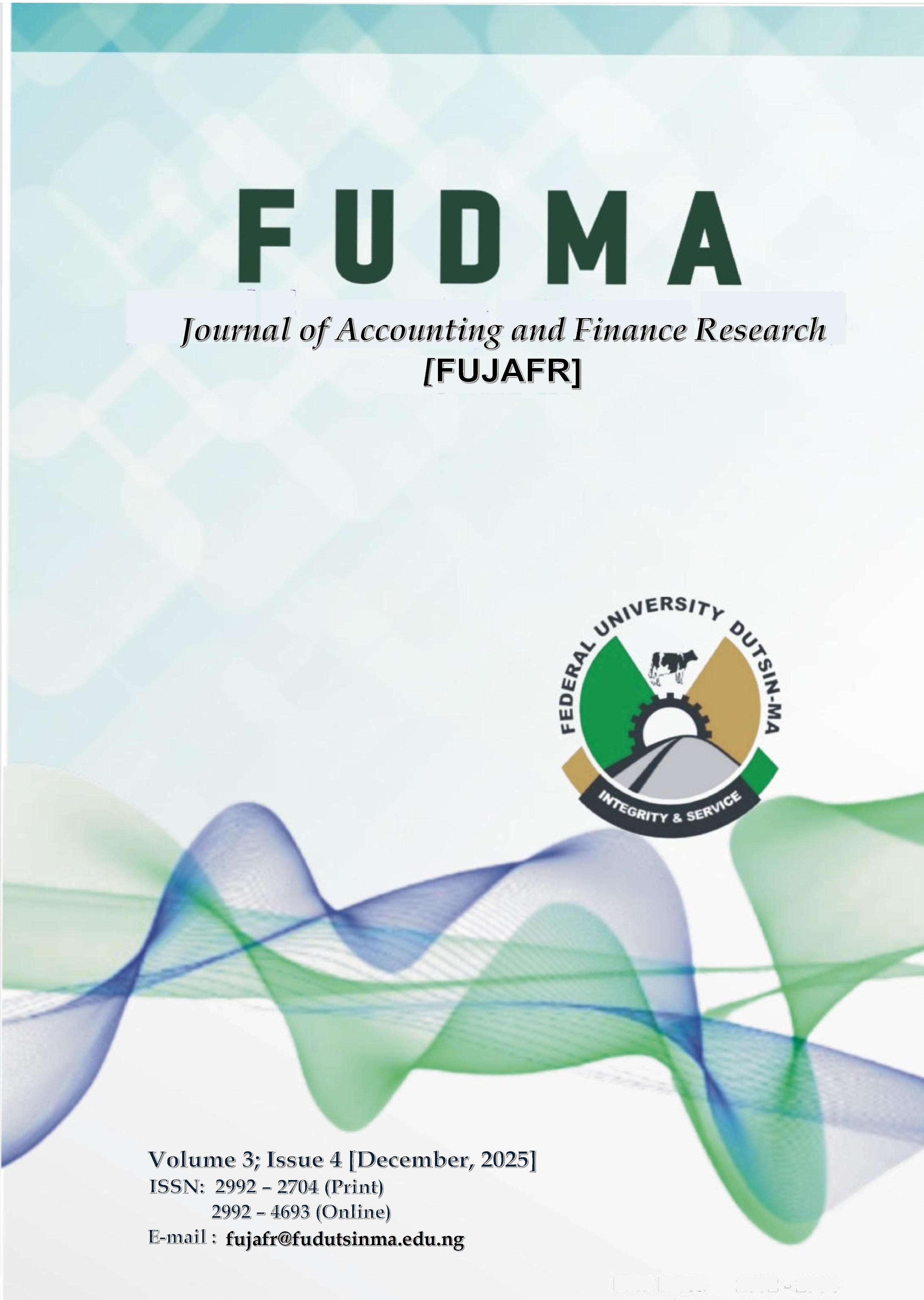Digital banking tools and savings performance
DOI:
https://doi.org/10.33003/fujafr-2025.v3i4.235.35-44Keywords:
Savings performance, Financial inclusion, Digital banking, Autoregressive distributed lag (ARDL), Interest rateAbstract
Purpose: This study examines the impact of digital banking tools, specifically Point of Sale (POS) systems, Automated Teller Machines (ATMs), and mobile banking (MOB), on savings performance in Nigeria. The primary objective is to assess how the increasing adoption of these technologies influences savings mobilisation and overall financial inclusion within the Nigerian banking sector.
Methodology: A quantitative research design was adopted, employing secondary time series data sourced from the Central Bank of Nigeria (CBN) from 2009 to 2023. Econometric techniques, including the Phillips-Perron unit root test and the Autoregressive Distributed Lag (ARDL) bound testing approach to cointegration, were used for data analysis to investigate both the short-run and long-run relationships between digital banking variables and savings performance.
Results and Conclusion: The empirical findings indicate the existence of a long-run equilibrium relationship among the variables. Specifically, MOB and POS transactions exhibit a positive and statistically significant impact on savings performance. Conversely, ATMs display an insignificant relationship with savings performance. The study concludes that digital banking tools significantly enhance savings performance in Nigeria, particularly through MOB and POS platforms, which have helped bridge access gaps and simplified banking for the unbanked/underbanked populations. However, the potential of ATMs to stimulate savings remains underutilised.
Implication of findings: Policymakers and financial institutions should strengthen and expand digital banking infrastructure, particularly in rural/underserved areas, to promote inclusive access to financial services. Furthermore, stabilising the macroeconomic environment and improving digital literacy will help build public trust in electronic banking channels, thereby improving national savings performance.
Downloads
Published
How to Cite
Issue
Section
License
Copyright (c) 2025 FUDMA Journal of Accounting and Finance Research [FUJAFR]

This work is licensed under a Creative Commons Attribution-NonCommercial 4.0 International License.
No Rights Reserved





